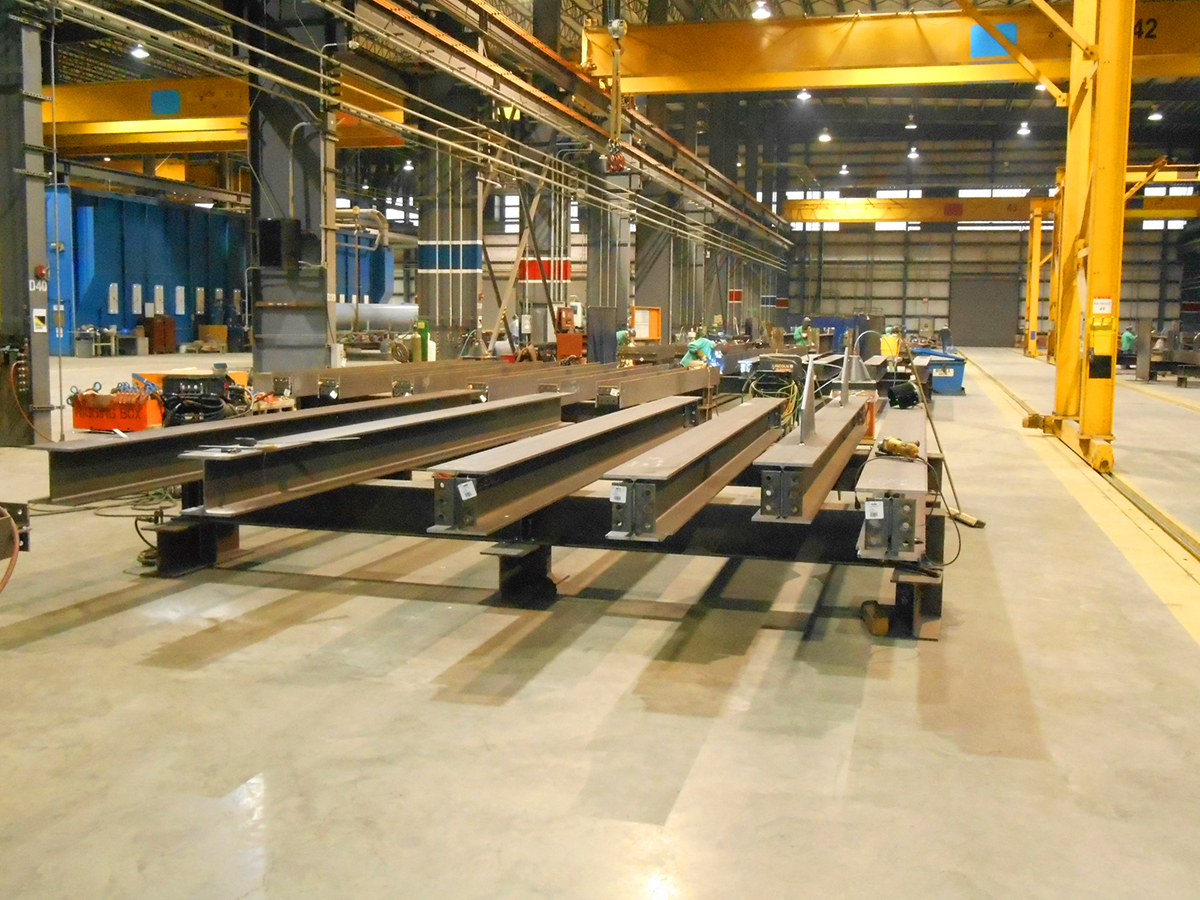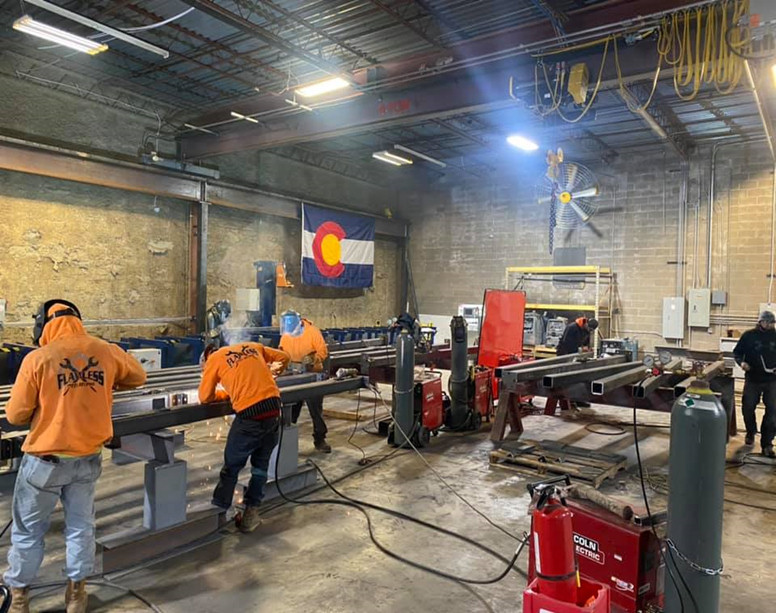Steel Fabrication Melbourne: Craftsmanship Meets Innovation
Steel Fabrication Melbourne: Craftsmanship Meets Innovation
Blog Article
Innovative Patterns in Steel Manufacture: Enhancing Longevity and Accuracy
In the world of steel construction, the pursuit of longevity and accuracy has brought about a wave of ingenious trends that are reshaping the sector. From developments in welding technologies to the assimilation of robotic automation in fabrication procedures, the landscape of steel production is evolving quickly. High-strength alloy development, combined with the utilization of 3D modeling and simulation software program, is pushing the borders of what is attainable in regards to architectural stability and precision. The growing emphasis on lasting practices in steel production is not just driving efficiency however also cultivating a more ecologically mindful strategy to fabrication. These trends are not simply forming today however likewise preparing for the future of steel fabrication, promising additional improvements in durability and precision.
Advanced Welding Technologies
In the world of steel manufacture, the adoption of sophisticated welding technologies has dramatically reinvented the industry's technique to achieving premium high quality and accuracy in architectural welds. Advanced welding innovations, such as laser beam welding and friction mix welding, have arised as game-changers in the field. By leveraging these sophisticated welding methods, steel fabricators can raise the resilience, toughness, and precision of their structural welds, satisfying the increasingly demanding needs of modern building projects.
Robot Automation in Construction
Welcoming robotic automation has ended up being a foundation of modern-day steel fabrication methods, simplifying processes and enhancing efficiency across the market. Robotics are changing the way steel elements are produced, using unrivaled precision and speed while lowering human error. These automated systems can handle repeated tasks with constant accuracy, causing better end items.
One trick advantage of robot automation in steel manufacture is the capacity to function all the time without exhaustion, considerably raising manufacturing result. This continual procedure decreases downtime and increases project timelines, eventually saving prices for suppliers. Furthermore, robotics can be configured to do complex tasks that may be harmful or difficult for human workers, improving safety and security in the office.
In addition, robotic automation enables seamless assimilation with other electronic modern technologies, such as computer-aided design (CAD) software program and Net of Points (IoT) systems (steel fabrication melbourne). This interconnected strategy enhances communication in between different phases of fabrication, optimizing process and making certain real-time monitoring and control. As the steel manufacture sector remains to develop, robot automation attracts attention as a transformative pressure driving efficiency and precision in producing procedures

High-Strength Alloy Development
The development of high-strength alloy development in steel fabrication is reshaping the industry's method to improving material sturdiness and performance. High-strength alloys are engineered to show exceptional mechanical buildings, such as raised tensile toughness, durability, and rust resistance compared to typical steel qualities. By including these sophisticated alloys into fabrication processes, producers can create components that withstand greater anxiety levels and rough settings, bring about even more dependable and sturdy final result.
One secret benefit of high-strength alloy growth is the capability to reduce product thickness without compromising architectural integrity. This not just leads to lighter-weight components however also adds to cost financial savings and enhanced efficiency in fabrication and setting up processes. The enhanced strength-to-weight proportion of these alloys allows for the layout and construction of frameworks with higher load-bearing capabilities while reducing total weight.
3D Modeling and Simulation Software
Innovations in steel fabrication procedures have actually been substantially propelled by the assimilation of advanced 3D modeling and simulation software program tools. These tools permit producers to develop detailed online designs of their jobs, enabling them to imagine the last item with precision before any type of manual labor begins. By imitating various tension aspects, ecological problems, and structural loads, producers can maximize layouts for enhanced durability and performance. Furthermore, 3D modeling and simulation software program simplify the production process by recognizing potential problems early, lowering the need for costly rework and reducing product waste.

Sustainable Practices in Steel Production
Incorporating sustainable techniques into steel manufacturing processes is necessary for lessening environmental effect and ensuring long-lasting source availability. One crucial lasting method is the fostering of energy-efficient technologies to minimize greenhouse gas exhausts during the steel manufacturing process. This includes utilizing eco-friendly energy sources, such as solar or wind power, to power steel plants and applying energy-efficient devices to optimize energy usage.
An additional crucial element of lasting steel manufacturing is the responsible sourcing of basic materials. This entails ensuring that the iron ore and other resources used in steelmaking are acquired from moral and eco-friendly sources. By advertising openness in the supply chain and adhering to stringent ecological criteria, steel manufacturers can decrease the her latest blog adverse impacts of source extraction on local ecological communities and communities.

Verdict
To conclude, the ingenious trends in steel manufacture such as innovative welding modern technologies, robot automation, high-strength alloy development, 3D modeling and simulation software, and lasting practices are boosting the sturdiness and accuracy of steel products. These advancements are changing the steel construction industry by enhancing quality, sustainability, and performance. It is clear that the future of steel construction hinges on accepting these sophisticated innovations to meet the demands of modern-day building and navigate to these guys production industries.
In the realm of steel manufacture, the quest of durability and precision has actually led to a wave of innovative patterns that are improving the sector.In the world of steel manufacture, the adoption of sophisticated welding innovations has actually substantially transformed the market's approach to achieving remarkable top quality and precision in structural welds. As the steel manufacture sector continues to progress, robot automation stands out as a transformative pressure driving performance and precision in making procedures.
Furthermore, recycling and reusing steel scrap and waste materials play a considerable function in enhancing the sustainability of steel production. metal fabrication melbourne.In conclusion, the innovative fads in steel fabrication such as advanced welding technologies, robotic automation, high-strength alloy advancement, 3D modeling and simulation software application, and sustainable techniques are enhancing the longevity and accuracy of steel items
Report this page